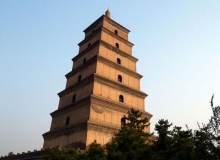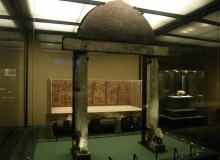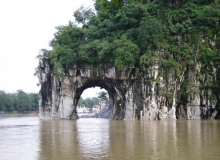
Speak to a specialist
0208 777 4873
0208 777 4873
Places to see: China

MING DYNASTY CITY WALL
The City Wall ofXi'an is an extension of the old Tang Dynasty structure as a result of this wall building campaign. After its extension in Ming Dynasty, it is 12 meters high, 12-14 meters wide on the top, 15-18 meter thick at the bottom and 13.7 Km in length.
The City Wall was first built of earth, rammed layer upon layer and the base layer was made of mixture of earth, quicklime glutinous rice extract, tempered together. It made the wall strong and firm.
Thus the Ming Dynasty city wall formed a complex and well-organized system of defense. It is also the most complete City Wall that has survived through China?s long history. The City Wall itself is a true display of ability and wisdom of the working people in ancient times. It provides invaluable and substantial material for study of the history, military science, and architecture of the Ming Dynasty.

BIG WILD GOOSE PAGODA
It is also well known for the name of Cien Temple. It was founded in 580 AD, Sui dynasty, originally named Wulou temple. In 648 AD, when the King, Lizhi, was a child, his mother queen Wende died at her yang age. In order to memories his mother, the king ordered to rebuild this temple and changed name into Cien temple. The dimension of temple is great, totally thirteen yards and 1897 rooms with exquisite and graceful pavilions. Cien temple is located in south suburb of Xi'an , 4 kilometers from city center.

SHANNXI HISTORICAL MUSEUM
Shaanxi Province is the birthplace of the ancient Chinese civilization. Xian City was the capital city in thirteen dynasties which in total lasted over 1100 years. Consequently, the ancient history of Shaanxi is to some degree the ancient history of China. The Shaanxi History Museum considers it an obligation to be a showcase of ancient civilizations. It is situated in the southern suburb of Xian City, northwest of the Big Wild Goose Pagoda. Since it was opened to the public in 1991, its architectural buildings, internal apparatus, and exhibits have made it famous as a first-class museum in China.

ELEPHANT TRUNK HILL
Elephant Trunk Hill is located on the western bank of Li River Scenery. The shape of the hill is just like a huge elephant drinking water from the river with its trunk, so it is called Elephant Trunk Hill. Shui Yue Cave (Water Moon Cave) is between the trunk and the legs, which is a semi-round cave penetrated by water. The inverted reflection of the cave in water plus the part above forms a full moon. This phenomenon is unique and many laudatory inscriptions were found on the wall inside the cave. Visitors can boat through the cave to the river.
Subscribe here to our monthly newsletters


